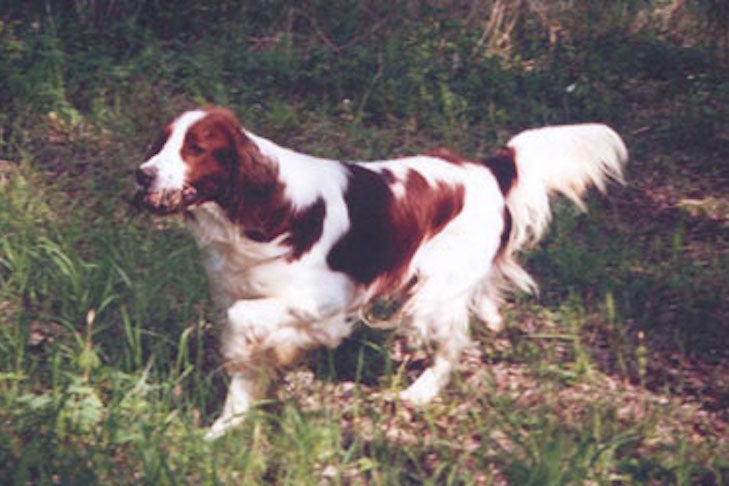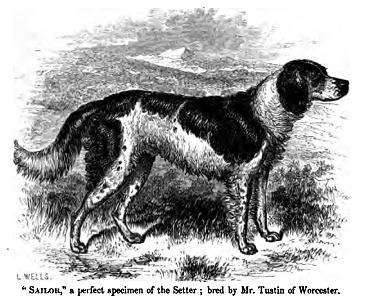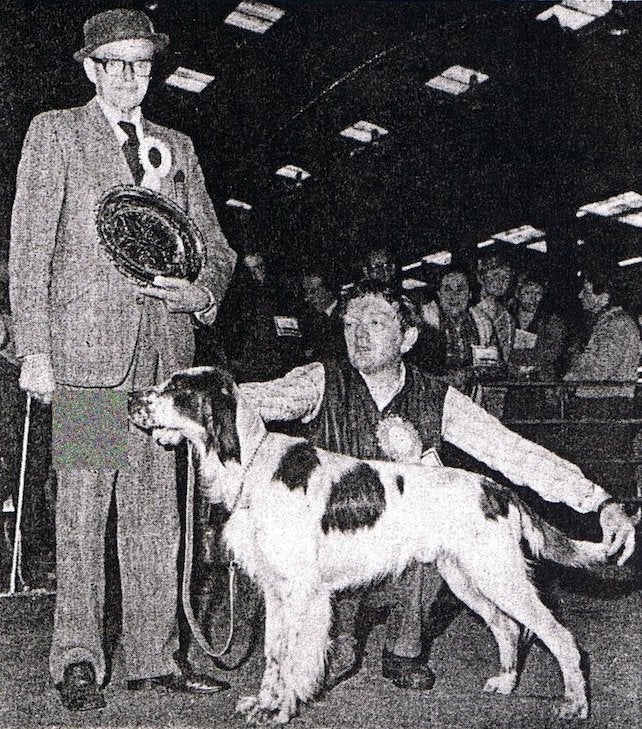
No matter what war they serve in, returning soldiers often come home to find the place they left very much changed.
There are the sad discoveries of parents who pass. Sweethearts who stray. And, in the case of dog lovers, beloved breeds that are no more.
The decimation of dog breeds during wartime comes down to a cruel kind of calculus: When food is scarce and the basics of life are rationed, keeping dogs becomes a luxury that few can afford. Particularly after both world wars, entire breeds in Europe almost literally disappeared, requiring altogether different kinds of soldiers to rescue them from oblivion.
When the Reverend Noble Huston returned home to Ballynahinch in Northern Ireland after serving as an army chaplain during World War I, he found that the once-populous Irish Red and White Setters of his youth had been reduced to near zero.
Sadly, the demise of these handsome setters – one of eight native Irish breeds recognized by the American Kennel Club – was underway long before the trenches of the Great War had been dug. Up until the 19th Century, these avid gundogs were the favorites of the landed gentry: Like all setters, they would freeze, or set, in the field when they air-scented game birds like partridge, red grouse, or pheasant hiding amid the vegetation, and the contrast of their particolor coats made them easy to spot in the field.
Immobile as statues, their tails held level with their backs, the Irish Red and White Setters stared rigidly in the direction of the soon-to-be-startled birds. The tensed dogs sometimes crouched slightly, or set on the ground – all the better for the hunter to come up behind them and throw a net over the hapless fowl. Later, when guns replaced nets, these gentlemen’s hunting dogs still held their positions, ever steady even as gunfire exploded above them.

What Happened to the White?
Breed authorities maintain that Irish Setters had always been white with red markings, a holdover from their reportedly earlier spaniel roots. By the 1600s, predominantly red setters began to appear in red-and-white litters, with various breeders focusing on one color or the other, or embracing both.
In the late 1800s, however, the red-coated setters became dizzyingly fashionable, thanks in large part to American tourists who became smitten and desired to bring them home. In short order, the financial incentive to breed more red dogs to satisfy the overseas market turned the tables on the once more populous red-and-white dogs.
In 1882, a Red Setter Club was formed, and four years later a breed standard was adopted, stipulating that an Irish Setter should be red.
In the ultimate indignity, the once original Irish Red and White Setters found themselves lacking official status in the dog world, and were now sometimes mistaken as nothing short of crossbreds. As the red setters ascended, the red and whites receded into the background, until World War I gave them a final push into what Rev. Huston called “the jaws of extinction.”
The Presbyterian minister, however, was determined to pry them out. With the help of his cousin Dr. Elliott – whose house, named Eldron, provided a convenient kennel affix – Rev. Huston found a few remaining dogs about 30 miles away in the town of Monaghan, including a mismarked female that was acquired from a gamekeeper. Eldron Gyp was half-white and half-red, and logically so: Her mother was a red setter, her father a red and white.
Rev. Huston bred Gyp wisely, choosing Glen of Rossmore as the sire of one of her litters. The Rossmore family had been breeding Irish Red and White Setters exclusively over the course of three centuries; because the family maintained kennels at their Rossmore Castle in County Monaghan and also had shooting grounds on the Island Arran on the English coast, their dogs were also sometimes referred to as Rossmore or Arran setters.

A Continued Breed
While Rev. Huston did not record official pedigrees – a noted beekeeper, perhaps he was more focused on the entirety of his canine hive rather than its individual components – he did log each litter in the parish register. (Rev. Huston lived across the road from a priest who raised cows, leading to some good-natured joking about a land of Catholic milk and Protestant honey.) A handful of Irish Red and White Setters were sent abroad – one to the United States, two to Spain and a few to England – but for the most part they stayed on the emerald isle.
While Rev. Huston worked tirelessly to re-establish the Irish Red and White in the decades between the wars, no newcomers were entering the breed to help maintain it.
Near the end of his life, Rev. Huston began corresponding with Maureen Clarke (later Cuddy), who in 1940 acquired a sickly Irish Red and White Setter while studying at university. Determinately nursing the puppy back to good health, Cuddy named her Judith Cunningham of Knockalla, and bred her to one of the reverend’s dogs, Jack of Glenmaquin. By picking up precisely where Rev. Huston left off, Cuddy continued the fragile but unbroken thread of these special Irish dogs, which carries on right to modern times, as her once-frail puppy can be found in the pedigree of virtually every Irish Red and White Setter alive today.
“…the present Red and Whites are not a new breed nor a revived breed (like the Irish Wolfhound) but a continued breed,” Rev. Huston wrote to Cuddy, who meticulously preserved the breed history he provided her and kept copious records of her own breedings – documentation that proved vital as she struggled to have the dog world give her breed the recognition it deserved.
Cuddy’s husband William founded the Irish Red and White Setter Society in 1944, and soon after a breed standard was accepted by the Irish Kennel Club, though the breed was still not officially recognized. As the rest of the world shifted its focus to repairing the damage done by yet another world war, the Irish Red and White Setters again slipped into anonymity, chugging on in limited numbers in their eponymous native land, mainly owned by hunters who appreciated their skill in the field. To help enlarge the gene pool, Red and Whites were crossed with Irish Setters that carried the genetic white factor, with the approval and advice of former long-time breeders like Lord Rossmore.

The Irish Red and White Setter Today
Everything changed in 1980, when a dog that Cuddy bred, Harlequin of Knockalla, was exhibited at Crufts, the most high-profile dog show in Great Britain and, arguably, the world. Owned by Alan and Ann Gormley of Dublin, who would go on to be well known for their influential Meudon line of dogs, Harlequin was inadvertently listed among the Irish Setters at the show. As the red-marked dog with the brilliant white coat entered the ring, the assembled fanciers realized that a breed many had assumed had succumbed to the unsentimental march of time had not yet given up the fight.
After so many frustrating starts and stops, the Irish Red and White Setter finally began to receive the recognition it deserved. After the breed was recognized by the Irish Kennel Club in the late 1970s, the Kennel Club in the United Kingdom followed suit in 1984, the Fédération Internationale Cynologique in 1989 and the American Kennel Club in 2009.
With Irish Red and White Setters reunited with their red brethren in the show rings, it is obvious that there are more differences than just color. After a century as show dogs, Irish Setters are arguably more stylized both in appearance and presentation; the Irish Red and Whites are a bit shorter and stockier, looking for all the world like they could head into the field without skipping a beat.
Today, the Irish Red and White Setter is still not bred or shown in great numbers and is considered a Vulnerable Native Breed by the Kennel Club in the United Kingdom. While the breed likely will never achieve the sheer numbers of its red-coated cousin, it has a devoted following around the world. Most important, after decades of obscurity, Ireland’s original setters finally have the official recognition they’ve always deserved.

